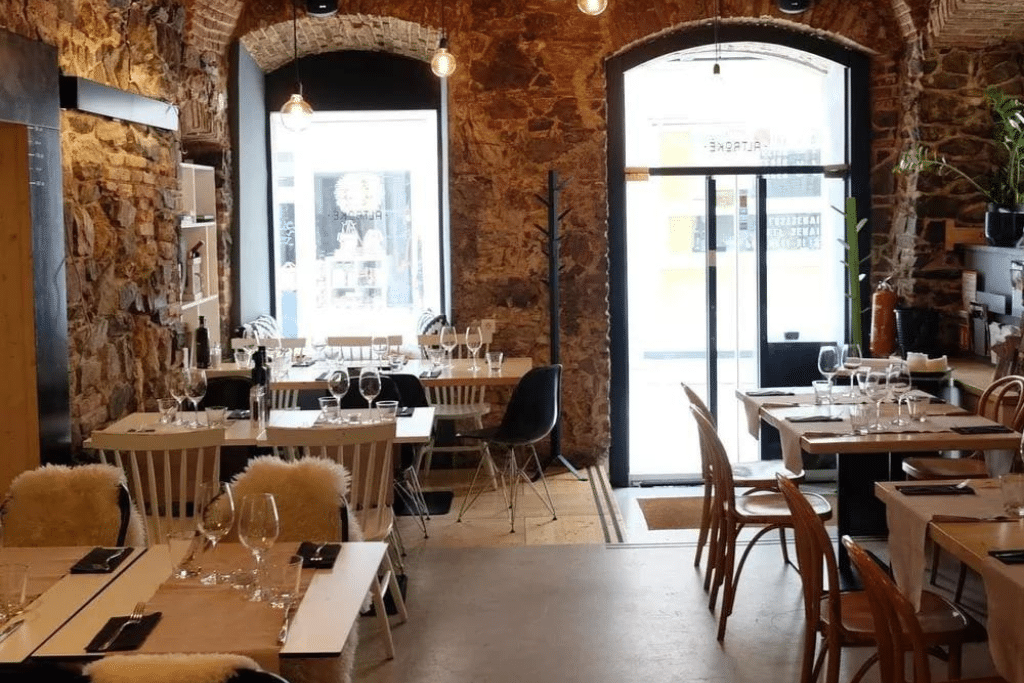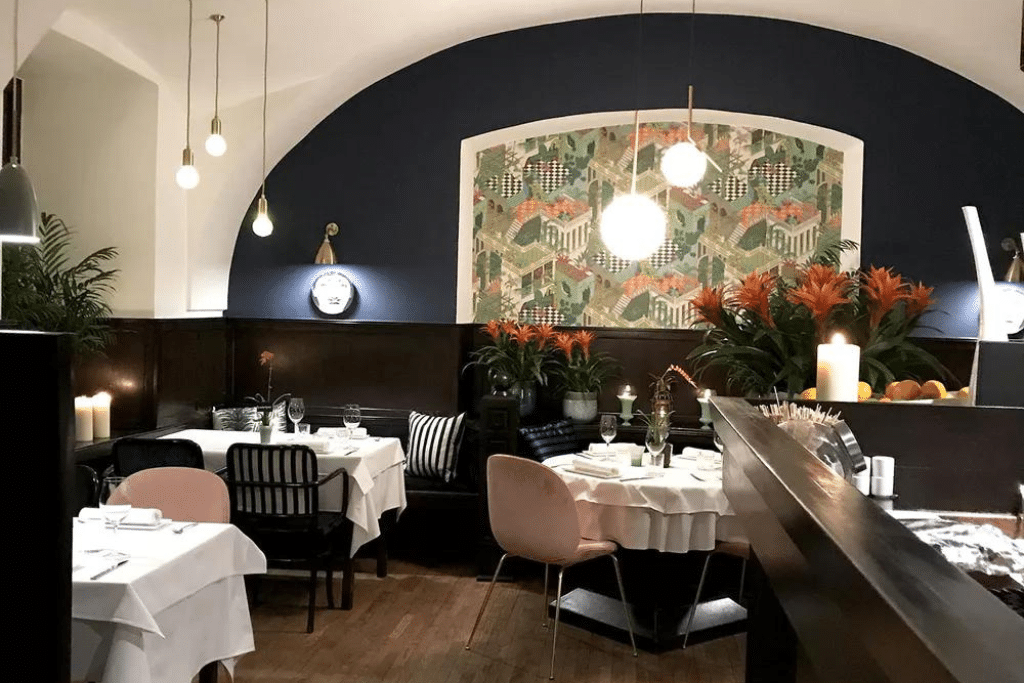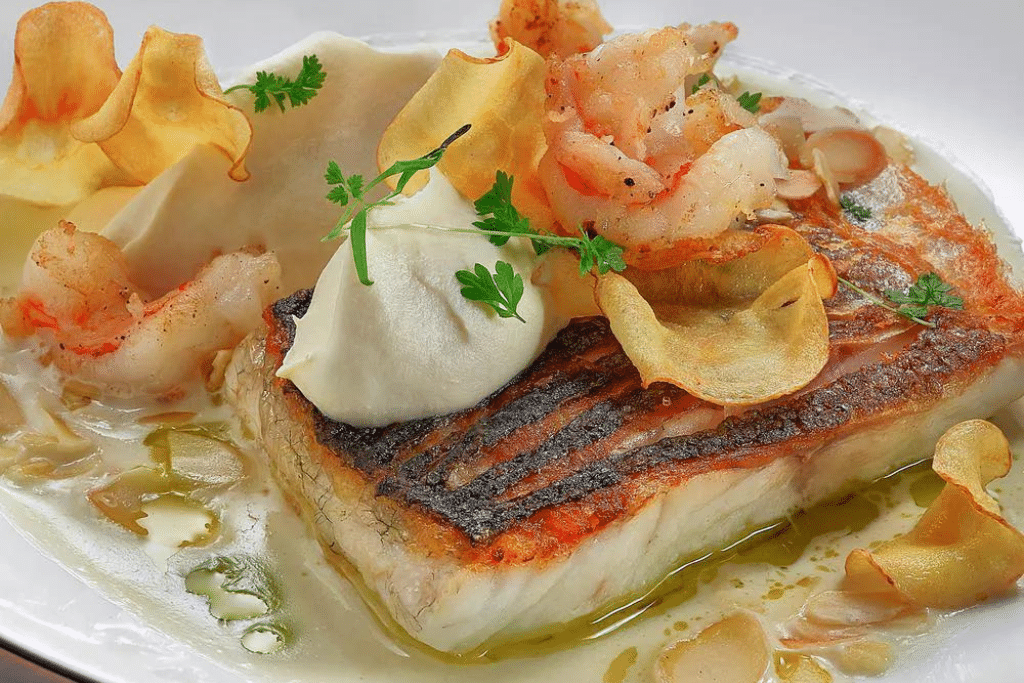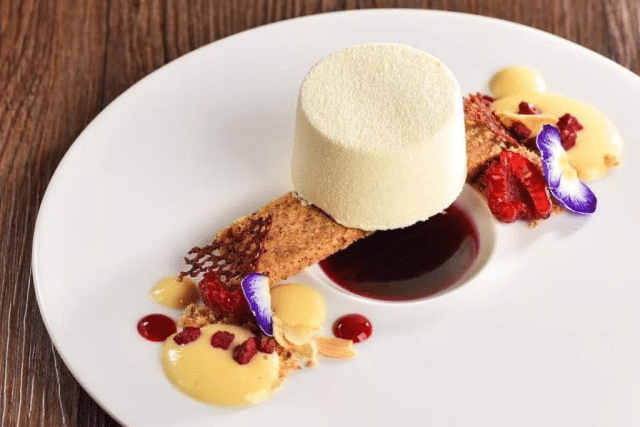ALTROKÈ
The story of Istrian inspired cousine served at Altrokè, a restaurant run by Matjaž Čok, begins in Plavje, a village on a small hill overlooking the Gulf of Trieste in Koper near the Italian border, where the family produces olive oil and wine as a part of the family business. Čok and his staff serve dishes made from local, seasonal ingredients – fish from the Adriatic sea and boškarin beef, olives, grapes figs, different types of fruit and herbs, which is why their menu also changes with the seasons.
The restaurant is situated in the old medieval part of Ljubljana and its name means “certainly” in Istrian dialect – a way of expressing appreciation and confirmation.
A love for Istrian territory , as well as for food in general, is what drives Matjaž Čok, whose family have always been involved in agriculture. Čok’s decision to work in the restaurant sector was influenced primarily by his grandmother, who ran an Italian trattoria in Koper in the 1960s, which became renowed for its Bolognese cuisine. Čok opened Altrokè in 2015 and although his work in Ljubljana focuses mostly on the management of his restaurants (the second, Vino&Ribe, which is dedicated to fish dishes and wine, was opened in the same month as Altrokè), he is ably assisted in the kitchen by young chef Tadej Dolinar, while the strictly Italian desserts are the responsibility of Roman pastry chef Carlo Panico.

PETI 181
The name of this restaurant, chosen by its owner-chef Petra Kapetanović Orlić, refers to the date it was opened – January 18 2018. Peti is an elegant and welcoming restaurant situated just a stone’s throw from the River Ljubljanica which runs through the capital, adding its own rhythm and essence to the city’s atmosphere.
Although influenced by France, where the chef trained on Cordon Bleu courses in haute cuisine, the dishes served at Peti 181 represent a mix of experiences from various countries with a focus on top-quality Slovenian ingredients. Nothing is left to chance here, as demonstrated by the unique, handmade plates created by the chef during the pandemic. The restaurant’s main concept is that of offering hospitality – making guests feel at home thanks to attentive service, a welcoming ambience, and food that is always deeply satisfying.
Peti 181 follows a strict “zero waste” policy, only cooking small quantities (the amount that is strictly necessary) at a time – when a dish is finished, they simply serve something else.

CUBO
The soul and the undisputed reason for its success is self-taught restaurateur Boštjan Trstenjak, one of the leading figures in the local gastronomic scene. Situated just a few minutes’ drive from the centre of Ljubljana, Cubo is a modern restaurant which guarantees privacy and quiet, as well as its fine cuisine which showcases the best ingredients from Slovenia and surrounding countries.
Other qualities, such as friendship, complicity, esteem, positive energy, and sharing and at its peak when we look at Trstenjak’s relationship with his most loyal guests – guests who become family. This is a group of people is a loyal and creative team which helps Trstenjak enhance his menu as well as the whole Cubo’s experience. The relationship with local suppliers is of utmost importance: this is why typical local pasta is sourced from Branko Lukšić (Croatia), the meat from Brda (Slovenian side of Collio), and the vegetables from small-scale Slovenian growers such as Klemen Dovč.
Cubo is also famous for its desserts – the restaurant has even dedicated a cookery book to them and won the Best Desserts Cookbook in the World award by Courmand Cookbooks with it.















